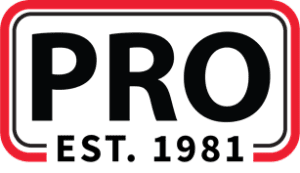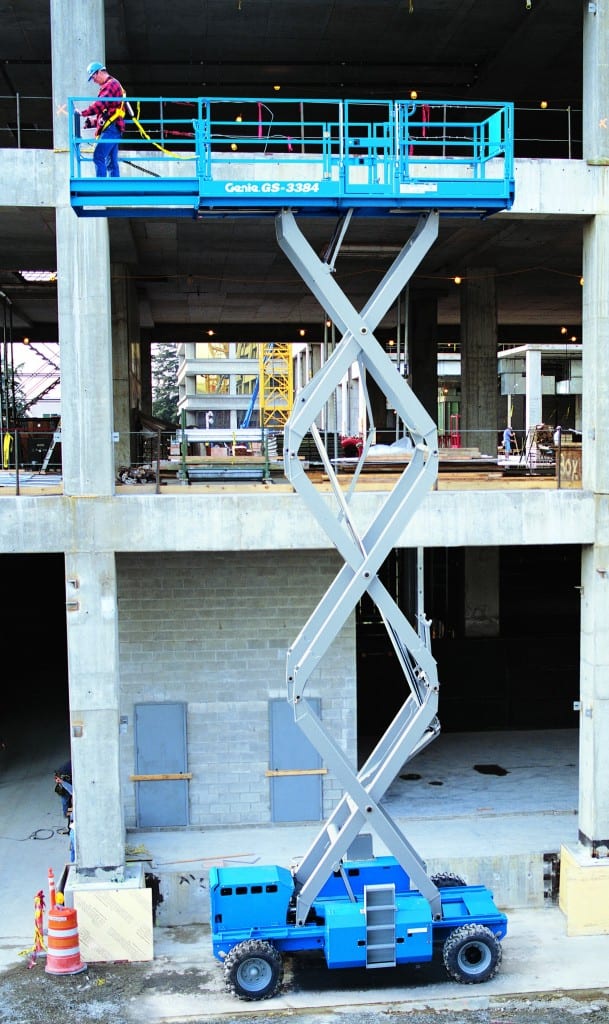Many construction, industrial, and maintenance projects require tasks to be performed at heights that are difficult or impossible to reach. Aerial work, however, presents safety concerns.
Falls, collisions, and electrocutions claim too many victims each year. Telehandler and man lift operators must remain vigilant. No cost savings or expediency is worth cutting corners and risking job delays or construction injuries caused by improper or unsafe use. Follow this construction safety guide to ensure safe and efficient operation when using these machines.
Before You Begin Getting Your Aerial Lifts
Construction safety with lift equipment begins before you even start using the equipment at the jobsite. When buying or renting a man lift or telehandler make sure to speak with an expert about which machine is best for your job.
Different applications such as whether you are working indoors or outdoors, or on rugged terrain, call for different machines and safety concerns, including size, lift height, maneuverability, etc. For example, the right size will eliminate the temptation to erect a ladder on the platform or use boards as “scaffolding” across the equipment’s guardrails to increase workers’ reach.
 Step 1: Inspect Your Jobsite
Step 1: Inspect Your Jobsite
When the equipment arrives at the jobsite, thoroughly inspect the work area to identify potential hazards:
- Overhead obstructions (especially power lines!)
- Loose gravel and ice
- Obstacles
- Confinements
- Drop-offs
Also, take special note of high winds and thunderclouds. On a work platform 50 feet in the air is the last place you want your workers when lightning strikes or gale forces blow.
Lastly, don’t forget to inspect the equipment as well. Make sure there are no inflated tires, low fluids, etc.
Step 2: Operate Man Lifts and Telehandlers Safely
Safe operations means taking all possible precautions BEFORE initiating a lifting procedure:
- Always use outriggers, brakes, and wheel chocks, even when working on level ground.
- Obey the manufacturer’s load limit. And don’t forget to include the operator’s weight and any tools in the total.
- Lift loads slowly, checking at regular intervals that the telehandler’s frame remains level.
- Always know where the platform is headed in order to avoid pinch points.
- Always lower the boom and the load before moving the equipment.
- When moving the machinery to a new location, negotiate slopes at a 90-degree angle. That is, go up, over, and down slopes, rather than across their faces, which would cause the lift to lean.
Step 3: Keep Your Workers Safe
Keep your equipment operators and other workers safe by insisting they wear appropriate personal protective equipment, including:
- A hardhat
- A full body harness and lanyard anchored per manufacturer’s recommendations when operating boom platforms.
- Always where your seatbelt if your equipment comes with it (i.e. Telehandlers)
Operators are also responsible for keeping others safe:
- Ensure jobsite visitors and onlookers keep a safe distance for the work performed.
- Never lift the boom over anyone’s head.
- The operator is the only person allowed in the telehandler.
- Keep feet firmly on the work platform’s floor.
- Never climb on the boom or the guardrails.
Construction Safety Is Our #1 Priority
The Pro Group carries various aerial lifts and equipment for both purchase and rent within the New England area. When you’re ready to rent or purchase a man lift or telehandler, call us at (857) 706-2980, and we’ll help you choose equipment meets the jobsite conditions, your reach and load requirements, and your budget.


 Step 1: Inspect Your Jobsite
Step 1: Inspect Your Jobsite
